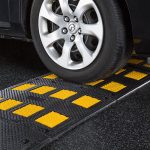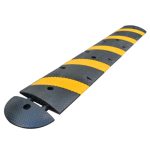Introduction to Wheel Stoppers
Wheel stoppers, also known as parking blocks, play a crucial role in enhancing parking safety. These devices are designed to prevent vehicles from moving beyond a designated parking space, ensuring both vehicle and pedestrian safety. Installing wheel stoppers can significantly reduce the risk of accidents in parking lots and private driveways.
Types of Wheel Stoppers
Rubber Wheel Stoppers
Rubber wheel stoppers are durable and eco-friendly. They are typically made from recycled materials and can withstand various weather conditions. These stoppers are resistant to UV light, moisture, oil, and extreme temperatures.
- Resilient under heavy pressure
- Easy to install and maintain
- Highly visible with reflective stripes
Concrete Wheel Stoppers
Concrete wheel stoppers are known for their robust construction and long lifespan. They are ideal for commercial and industrial parking areas where frequent replacements are not feasible.
- High strength and durability
- Low maintenance required
- Can be painted for better visibility
Plastic Wheel Stoppers
Plastic wheel stoppers are lightweight and easy to handle. They are often used in temporary parking situations or small lots.
- Cost-effective and lightweight
- Simple installation process
- Available in various colors for visibility
Benefits of Using Wheel Stoppers
Installing wheel stoppers in parking lots provides numerous advantages:
- Prevents vehicles from overrunning parking spaces, reducing the risk of minor collisions.
- Protects buildings, sidewalks, and other structures from vehicle damage.
- Improves overall traffic flow and organization within the parking area.
- Enhances safety for both drivers and pedestrians.
Installation and Maintenance
Setting up wheel stoppers is a straightforward process that involves securing them firmly to the ground. Depending on the type and material, different installation methods may be used, such as:
- Bolting them into concrete surfaces
- Using adhesives on asphalt or other surfaces
- Anchoring them with spikes in unpaved areas
Maintenance of wheel stoppers generally involves regular inspections for damage or wear. Any damaged stoppers should be repaired or replaced promptly to ensure continued safety.
Choosing the Right Wheel Stopper
When selecting a wheel stopper, consider the following factors:
- The type of traffic and vehicles in the parking lot
- Environmental conditions, such as exposure to extreme weather
- Budget constraints and long-term maintenance costs
- Visibility and safety needs
Conclusion
Wheel stoppers for cars are an essential component of parking lot safety. By preventing accidents and organizing parking spaces, they contribute to a secure environment for both vehicles and pedestrians.
For more information about prices and options for wheel stoppers, visit Unimat Traffic.




